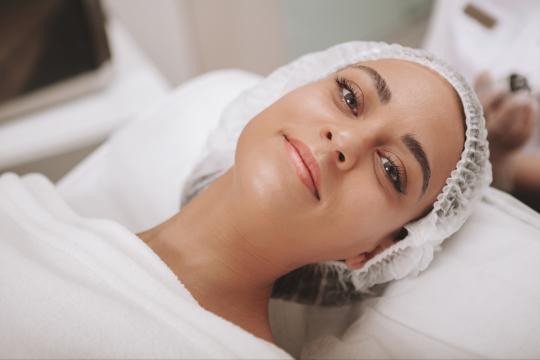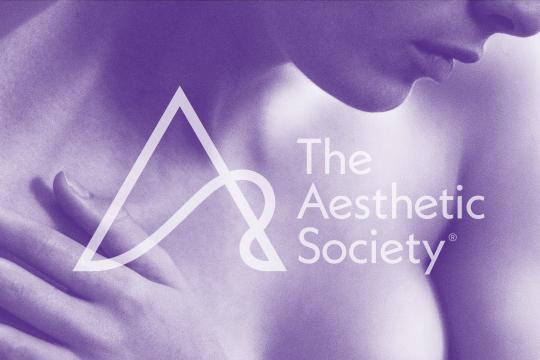
While there are plenty of apps out there that claim to be able to judge one’s age with precision, none can compare with the stone cold, in-person experience of another human’s eyeball scanning your complexion for signs to your true age. And since the day has yet to arrive when we can replicate the Insta filters, selfie angles and amateur lighting of a cell phone IRL (in real life), it’s probably a good idea to look at one of the biggest culprits used to size up the age on your driver’s license—and that culprit is your skin.
The deep creep of skin aging starts early and ramps up from there. It’s built upon a foundation of the sun damage that you might have prevented had you listened to the advice of your doctor, beauty blog, best friend, or Mom all hammering away about the importance of protecting your skin from the sun. But you didn’t. And here we are, with that same sun-damage making you look older, faster.
You: Harsh.
Us: Yes, sorry.
Okay, it's not entirely your fault, but it is well documented that unprotected exposure to the sun’s harmful UV rays can cause a little something called photoaging, and let’s not ignore the fact that “-aging” is tacked neatly onto the photo- portion of that word, shall we? Repeated UV exposure damages the skin’s supportive connective tissues—our good friends collagen and elastin—and without them, your skin loses it’s ability to repair itself, ushering in an age (pun intended) of redness, sunspots and other odd-pigmentations, a loss of elasticity and fine lines and wrinkles. All the things that tend to make someone “look their age” and worse. Adding insult to injury, this damage accumulates over time. Damage upon damage upon damage. (Notice, we’re not even touching on the very real danger of skin cancer caused by sun exposure—this is serious folks.) Photoaging is real, and it’s insidious. But is it untreatable? Thankfully, no.
Depending on the extent of damage to the skin, there are a variety of nonsurgical, in-office treatments and procedures that your doctor can use to address the discoloration, wrinkling and any other UV related skin issues:
- Chemical peels, in which your doctor applies a chemical solution to the skin, can remove the damaged outer layer and encourage a smoother texture while treating uneven pigmentation, blemishes and fine lines and wrinkles. Applications range from light to medium to deep, and while there’s minimal aftercare required for light to medium applications, some aftercare and downtime might be required for deeper chemical peels. Your surgeon will decide what type of peel will best address your needs and whether or not you’re a good candidate.
- Intense pulsed light (IPL), is a minimally invasive procedure used to treat uneven pigmentation, wrinkles and age/sun spots. Through the use of pulsed light therapy, your doctor can heat up the collagen beneath the skin to encourage the body’s ability to produce more. Enough, say to help fill in a fine line or wrinkle or to reduce redness or other discoloration. As this procedure is done in office and requires a series of treatments, there’s very little recovery time and/or side effects.
- Laser skin resurfacing, is another way in which doctors are addressing the signs of aging and treating sun damage, fine lines/wrinkles, loss of elasticity and discoloration through the use of ablative, nonablative and fractional lasers. Your doctor will examining the extent of the damage to your skin and then determine which type of laser is right for you. And while a series of treatments are often required for the best result, the minimal downtime and side effects of laser therapy is making these procedures increasingly popular in most anti-aging treatment plans.
- Microdermabrasion is an in-office, gentle exfoliation of the top layer of dead skin cells and is used to stave off sun damage and/or treat the very minimal effects of aging. This exfoliation can stimulate collagen growth and improve upon the texture and pigmentation of the skin as well as offering up a nice healthy glow. Having relatively no downtime and minimal risk, makes this a popular procedure, particularly for those who are in the very beginning stages of aging. Your doctor can advise is microdermabrasion might be right for you.
- Dermabrasion and dermaplaning are similar to microdermabrasion, in that they eliminate the dull, damaged upper layer of your skin, but where as microdermabrasion is a “gentle” exfoliation, dermabrasion and dermaplaning are much more intense—think the bigger sibling of microdermabrasion. With both dermabrasion and dermaplaning the upper layer of skin is removed to a much deeper extent. These treatments require some downtime and aftercare, and are typically recommended to treat acne scarring, and more advanced fine lines and wrinkles and pigmentation issues. Essentially these two treatments completely resurface the skin.
While the multitude of treatments your doctor can use to treat sun damaged skin is not carte blanche for you to slather yourself 70’s-style in baby oil and frolic away in the blazing hot sun, it is hope that any premature sun damage making your skin appear older than your years can be treated. A visit with your board-certified plastic surgeon is the best way to assess, address and possibly undo the damage done. And that’s something to be grateful for, right?






